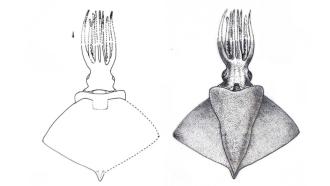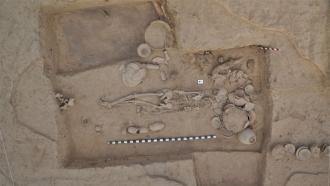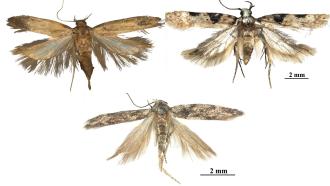![Inset: image of Snowflake yeast. Credit: Narayanasamy N, Bingham E, Fadero T, Ozan Bozdag G, Ratcliff WC, Yunker P, Thutupalli S. Metabolically-driven flows enable exponential growth in macroscopic multicellular yeast. bioRxiv [Preprint]. 2024 Jun 22:2024.06.19.599734. doi: 10.1101/2024.06.19.599734. PMID: 38948761; PMCID: PMC11213004. Yeast](/sites/researchmatters/files/styles/large_800w_scale/public/Snowfalke%20Yeast.jpg?itok=C12cPjze)
Consuming ‘food’, in the form of prey or nutrients from the soil or even sunlight, and converting it into energy, is one of the foundations of life. Once an organism got the food, the next big challenge for the evolution of complex life was distributing it to all its parts. For single-celled organisms, this isn't much of a problem as they're small enough that nutrients can easily diffuse, or spread out, to every corner. But as life evolved and organisms grew larger, this simple process became a significant bottleneck.
Complex organisms today have intricate vascular networks that transport food and nutrients throughout their bodies. But how did early multicellular life overcome this fundamental physical barrier without complex systems like our own blood vessels? Researchers from the Simons Centre for the Study of Living Machines at the National Centre for Biological Sciences (TIFR), International Centre for Theoretical Sciences (TIFR), Georgia Institute of Technology, USA, and Woods Hole Marine Biological Laboratory USA, set out to answer this question. Their new research, which examined snowflake yeast, offers a fascinating insight. Life's earliest steps towards complexity might have been guided by an unexpected solution: spontaneous, self-generated fluid flows.
Did You Know? Multicellularity is believed to have evolved independently at least 25 times in eukaryotes but complex multicellular organisms evolved only in six eukaryotic groups: animals, symbiomycotan fungi, brown algae, red algae, green algae, and land plants. |
Snowflake yeast is a type of yeast, specifically the unicellular Saccharomyces cerevisiae, that has evolved through laboratory evolution over many years to become multicellular, forming clusters visible to the naked eye. These clusters are quite basic, lacking any specialised systems for transporting nutrients, like the cilia (tiny hair-like structures) that some aquatic organisms use to create currents, or the intricate vascular networks found in plants and animals. The scientists wanted to see how these simple multicellular clusters managed to grow even though the snowflake yeast did not have any multicellular adaptations to transport the nutrients. Previous theories suggested that beyond a specific size, growth should slow down dramatically because nutrients cannot reach the inner cells quickly enough through simple diffusion.
They made two interesting observations: when the snowflake yeast clusters were grown in a liquid nutrient-rich environment, they grew exponentially, meaning their size doubled at a consistent rate, much like a population of single-celled organisms. This was a stark contrast to how they grew on a solid surface, where their growth was much slower and limited. The liquid environment appeared to play an essential role in the transport of nutrients. They hypothesised that what they were observing was an emergent biophysical mechanism, where the yeast's metabolism created fluid flows around them.
To determine how these flows functioned, the researchers employed tracer particles and a microscope to visualise the movement of fluid around the yeast clusters. They saw strong, three-dimensional currents, with fluid entering the sides of the cluster and exiting from the top in a stereotypical circulatory pattern. To confirm that these flows were driven by a physical principle, such as buoyancy, rather than gravity, they inverted their experimental setup. This caused the flow direction also to reverse, confirming that the flows were indeed buoyancy-driven, similar to how a lava lamp works, where warmer, less dense wax rises.
Like many organisms, the snowflake yeast metabolises nutrients, primarily glucose, from its surroundings, and produces byproducts like ethanol and carbon dioxide. The glucose and these less dense byproducts create a difference in density between the fluid inside and immediately around the cluster and the bulk fluid further away. This density gradient, much like the difference in density between warm and cold air, then drives the fluid to move.
The researchers further confirmed this by showing that these flows only occurred when the yeast were alive and actively metabolising with enough glucose present. If the yeast were dead or starved, the flows stopped, and nutrient transport reverted to slow diffusion. They even found a threshold size or a minimum size that the clusters had to reach to generate these significant flows. Below this size, diffusion was still the primary mode of transport. When the team broke apart large flow-generating clusters into smaller pieces, these smaller fragments no longer produced flows, but if they aggregated the small pieces back into a large cluster, the flows reappeared. This showed it was a collective, size-dependent phenomenon.
The research significantly advances our understanding of early multicellularity and the evolution of complex life. It was widely believed that the limitations of diffusion severely hampered the transition to larger sizes and that complex, genetically encoded transport systems, like our circulatory system, were necessary to overcome this. The new study challenges this view by demonstrating a spontaneous physical mechanism that can alleviate these constraints before any complex biological adaptations evolve.
The study also highlights the concept of biophysical scaffolding, where simple physical processes, arising from basic biological activity, can create new opportunities for evolution. This also illustrates how a trait evolved for one purpose, such as the snowflake yeast's entangled structure for mechanical stability, can serendipitously provide an unexpected benefit, like enabling nutrient-transporting flows.
The knowledge gained from this study could have applications in synthetic biology, biotechnology, robotics, and drug delivery. But more importantly, understanding these fundamental physical principles that underpin the evolution of multicellularity provides insight into how complex life arose on Earth. It's a reminder that sometimes, instead of looking for solutions in complex biological machinery, life's mystries may lie in the interactions with the world around us.






